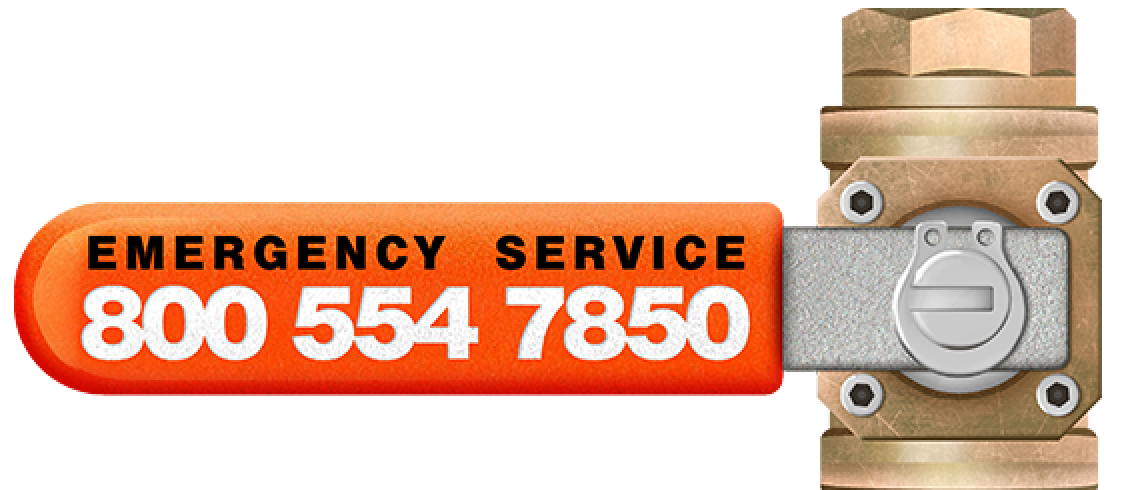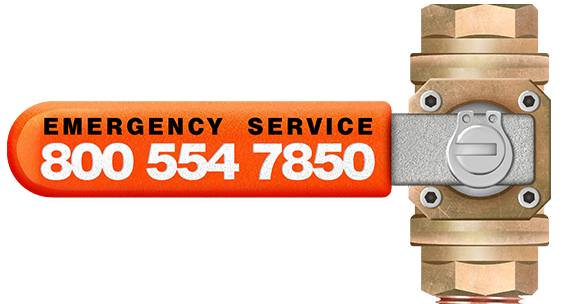A Sewer Backup Can Be a Terrifying Experience
It’s bad enough when you see your toilet overflow, but when you see sewage coming up from your shower drain, you know you have it bad.
Perhaps it shouldn’t need to be said, but sewer backups are extremely dangerous. One of the most influential technical advances in human sanitary conditions is the use of indoor plumbing.
Clean water comes in – dirty water and sewage goes out. Human interaction with sewage is virtually eliminated in 21st century America – Until there is the sewage backup. Ugh!
Hazmat Suits
Because of the bacteria and diseases present in sewage like E. coli, salmonella, cholera, and so much more, the cleanup requires special care. Seeing workers in hazmat suits might be a little disturbing, but in addition to protecting the workers, it serves as a reminder of how serious a situation a sewer backup is.
What a Sewer Backup Emergency Looks Like
It’s obvious that if you have a clogged toilet and it won’t drain but overflows, you have a sewer problem. If you see your sink or tub is stopped up, or water is rising in your sink or tub, you might not immediately think ‘sewer’. But you should.
If your water doesn’t drain in the tub, but all of the sinks drain just fine, your backup may be localized and only affect the tub. That’s good, and it’s easy to resolve. It could be a simple as removing hair from the drain.
But the sewer system spans from the sewer treatment plant operated by your local municipality (or septic system for some) all the way up to the drain in your sink or tub. If water is coming IN from a drain you have a sewer backup.
If the problem is localized like a non-draining tub, it might not require a 3 A.M. call to a plumber, but if you have a toilet overflowing, especially with sewage, or your drains are pushing water into your home, call right away (800) 544-7850. Our trained staff will help you evaluate the urgency of the situation.
Common Causes of Sewer Backups
Sewer backups can start in the bathroom, but there are other sources too. The most common sources of sewer backups include:
- Clogged toilets
- Clogged drains in the sink, shower, tub, washing machine, etc.
- Landscaping
- Systemic clogs
Toilets
Toilets are a dirty business. No getting around this unpleasant topic. When the flush doesn’t flush – but rises to the top of the bowl – it is frightening. It can wake you up from a sleepy visit to the bathroom very quickly.
The most common source of backups in the toilet revolves around things being flushed that should not be. Every toilet should have a plunger within reach in case of a clog. The sorts of things that tend to clog toilets include excessive toilet paper, feminine hygiene products, baby wipes, paper towels, and any number of things that should be thrown in the trash and not flushed.
The source of the problem is too much solid material trying to go through a 3-4 inch pipe. The only things that should be flushed are normal human waste and flushable toilet paper.
Again, it’s worth repeating: Hair, cotton balls, q-tips, condoms, feminine hygiene products, baby wipes, etc. should not be flushed. They will cause you problems eventually.
Sometimes those problems can be cleared easily by a plumber. Sometimes they will ease slowly over time as water is flushed through the pipes, but you run the risk of a full house sewer backup. Sewage previously flushed and presumed gone could come back, not only through the toilet but possibly even your sinks and tubs. Now you have not only a mess on your hands but a serious health hazard.
A final note about toilets, children need to be taught these things. Toddlers – perhaps it doesn’t need to be said, but they have been known to find the flush quite interesting and some love to see what happens to toys and other things when they put them in the toilet. These young ones should be watched carefully. Especially if they have your phone in the bathroom.
Sink, Tub, and Shower Clogs
All the pipes in your sewer system are connected. This means that every drain in your home or business leads to a larger pipe that takes your wastewater out to a septic tank, or more commonly these days, to a city sewer system.
Wastewater should flow one direction only. Away from the drain and out of the building.
If a sink gets stopped up it can be fixed easily and has a minimal negative impact. But if you get a clog in your pipes away from the drain but close to the connection to the city, you will create a biological hazard in your home. This is not just ‘gross’, but it can cause sickness and those with compromised immune systems run a real risk of death.
Common causes of clogs from drains include:
- Hair
- Grease
- Large debris like food particles
- Sand and dirt
Hair Clogs a Common Cause of Sewer Backups
Hair is especially problematic in tub and shower drains. Hair is not water-soluble so running more and more water through the drain will not break it down.
In very small amounts, like from daily shaving, it will flow easily through the pipes. But hair from showers tends to collect. Without a screen to capture the hair before it goes down the drain, it will start to collect in the drain and over time will start to cause water to drain slowly and sometimes stop draining altogether.
Beard and hair trimmings (more than just a shave) going down the sink can start to collect as it does in the shower or tub, so this should be avoided to avoid causing a backup in your sink…or a full house sewer backup further along the pipes.
The other thing that hair will do in a drain is create a sort of filter that will catch bigger particles that are sent down the drain. This means that if something that doesn’t dissolve goes down the drain, the hair will collect and start to create a dam to slow the drain. At some point, it becomes a full clog and creates a full backup.
Grease and Food Particles
Grease will build up in pipes, like cholesterol in arteries, and constrict the flow of water. The narrower it becomes the more easily debris will cause a clog.
Most modern kitchens have a garbage disposal that will grind up food and allow it to flow easily down the drain. When you use this device, you should always make sure you run enough water to keep the flow of the ground up food moving. It needs to go all the way through the progressively larger pipes of the sewer system.
If you don’t have a garbage disposal, do not scrape dinner plates off into the sink, but into the trash can. You never know just how clear the sewer system is. It may seem that small chunks of potato or macaroni should be no big deal. But if you had previously put grease down the drain, or hair from the shower is already restricting flow in the pipes, then your potato will just add to the blockage.
Your dishwasher may also be a source of large food particles. Some dishwashers drain into the garbage disposal, and that’s good because the food can be ground up before getting into the sewer pipes. But some don’t. In those cases, you need to make sure your dishwasher has a filter to catch food particles and you should clean it regularly.
Sand and Dirt
Sand and dirt are less common problems coming from inside your home, but if you have a utility room where you hose off muddy boots or wash sandy rugs in your washing machine, you could, over time, introduce quite a bit of sand that can collect with other debris in your sewer pipes to cause a full house sewer backup.
Businesses that mop dirty floors should be careful about dumping sandy mop water into the drain as well.
Sewer Backup from Landscaping
It may seem odd that landscaping would have anything to do with a sewer backup, but roots growing into the pipes can break them. This is the most common cause of underground pipes breaking. The ways this can cause problems are numerous.
A broken sewer pipe underground can be pushed out of place by growing roots, blocking the end of your pipe with earth.
Roots can crack the pipe and allow dirt and gravel to infiltrate the pipe and create a blockage.
Once the crack in the pipe happens, roots will get nourished by the water in the sewer pipe and they have been known to start growing inside the pipes, attracting roots from multiple plants. A pipe filled with tree roots won’t let your sewage flow. It will back up into your home or business and create a very unpleasant situation.
Cracked pipes that allow sewage to flow into your yard is a health hazard, the excess water can contribute to sinkholes that might be forming and can saturate the soil under your foundation. Such saturation can cause slab leaks, another significant problem that you would really not have to address.
Systemic Sewer Backup
A systemic clog would be one in your city’s sewer system. If something like this happens it could be a disaster for the whole block, or possibly even neighborhood.
There isn’t anything you can do to prevent such a disaster, but if it happens, and the sewer backs up into your home, you still have the problem to deal with. But you probably won’t know that it’s in the city system until you’ve gotten a plumber out to diagnose the problem.
24/7 Emergency Bathroom Plumber Service
Our Emergency plumber service includes addressing major sewer backups. We’ll bring a qualified plumber to the scene anytime day or night, 24/7 in Orlando, and throughout Central Florida.
Call us at (800) 554-7850 if you’re experiencing a sewer emergency.
We hope you never get even a whiff of such a smelly problem in your home. But if the most unfortunate backup happens, Relax, Trust Construemax.







